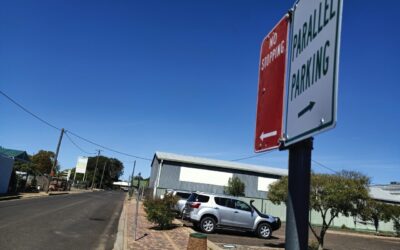Battery fire hazards, organic waste collection and promotion of a circular economy were high on the discussion list at the 2025 Waste Conference.
Councillor Ann Luke attended on behalf of Gunnedah Shire Council said waste was not something any local government could ignore.
“Gunnedah is doing waste well, it is important that we continue to support the great team we have to tackle the ever-increasing rules, regulations and constraints of the industry,” Cr Luke said.
Cr Luke’s report to council highlighted how the NSW Government through NSW Environment Protection Agency (EPA) was working towards general and specific targets to achieve commitments to reduce greenhouse emissions, as per National Waste and Resource Recovery.
The councillor also noted how ‘circular economy’ was about resource recovery from all waste sources – not only household waste such as paper and glass but also C&I (commercial and industrial) and C&D (construction and demolition) waste.
Data from the Department of Climate Change, Energy, the Environment and Water showed building and demolition waste generated in NSW was up almost 10 per cent from 2022 to 2023.
Hazardous waste was up 21 per cent and metals 26 per cent over the same time period.
Figures show much of this waste was either recycled or reused, contributing to the circular economy.
Also discussed at the conference was the imminent rollout of food organics and garden organics (FOGO) which starts next year.
Cr Luke said this will mean changes to the how and when we collect waste and how households divide their waste between the traditional green, red and yellow bins.
The councillor added that many local government areas are already participating through government supported trials.
According to the NSW EPA, local councils will be required to provide all NSW households who receive a residual (red lid) waste collection service with a Food Organics and Garden Organics (FOGO) waste service by July 1, 2030.
Relevant premises including supermarkets, some institutions and hospitality businesses will be required to have a source-separated food organics waste collection service in place, starting with the largest generators from July 1, 2026, and staggered to 2030 depending on how much waste they send to landfill each week.
Also discussed was battery related fire, which Cr Luke describe as a “big issue” for waste management.
She said planning by councils and waste contractors was already in place for “safe” places to take and park a burning truck.
Cr Luke said embedded batteries in items such as thermometers, children’s novelty shoes and pregnancy test kits, are an increasing issue for authorities.
An embedded battery is a small battery that is placed permanently within an item. They are often buried deep within the device and have no easy way of being removed.
Other items that could feature embedded batteries include bluetooth speakers and headphones, cordless hand-held and robotic vacuum cleaners, e-scooters, e-bikes and hover boards, and personal care devices such as electric toothbrushes and razors.
There were 193 battery-related fires in NSW between January 1 and August 1, 2024 – an 18 per cent increase on the same period last year. In 2023, the number of Li-on battery-related fires in NSW jumped to 285, more than double the previous year. The majority were traced back to small devices.
Vapes are also a growing concern as they contain both a battery and hazardous chemicals, posing serious fire risks for garbage trucks
and waste facilities when thrown in household bins.
A trial started last year for community recycling centres to accept embedded batteries – Tamworth was among the participating centres in North West NSW.
Cr Luke also highlighted the issue of product stewardship – the requirement for those manufacture items to have the solution for product’s end of life.
It involves taking responsibility for the full lifecycle of a product, including the development, design, creation, production, assembly, supply, use or re-use, collection, recovery, recycling or disposal of the product.
The NSW EPA said product stewardship goes beyond extended producer responsibility (EPR), which involves producers taking physical or financial responsibility for managing the environmental impact of their products only at the post-consumer state of their lifecycle.
To order photos from this page click here



